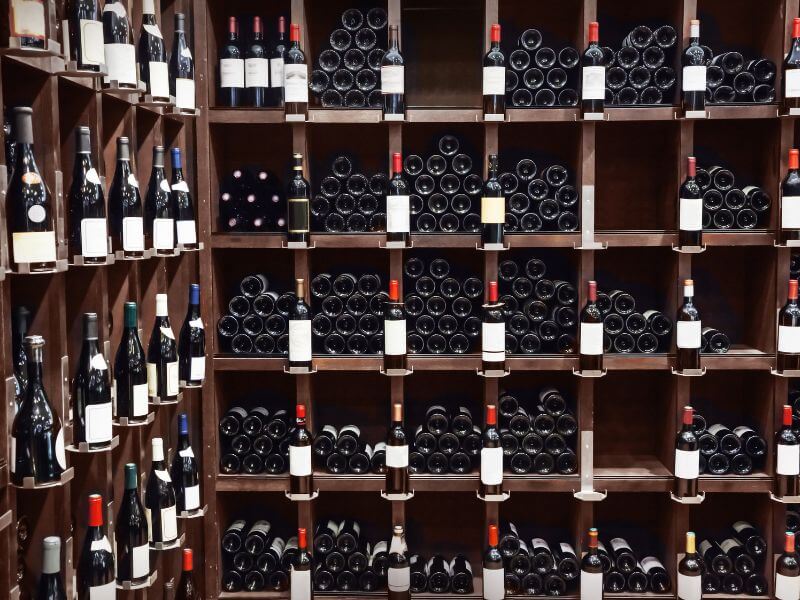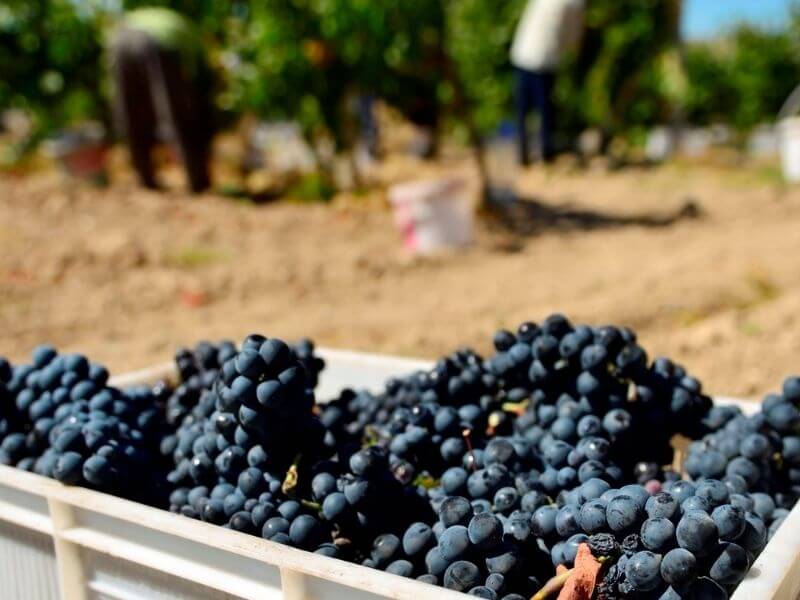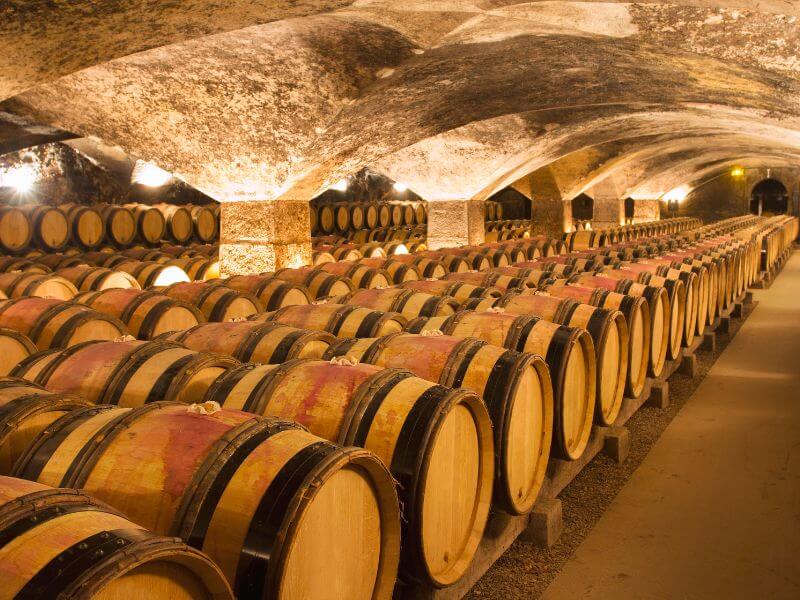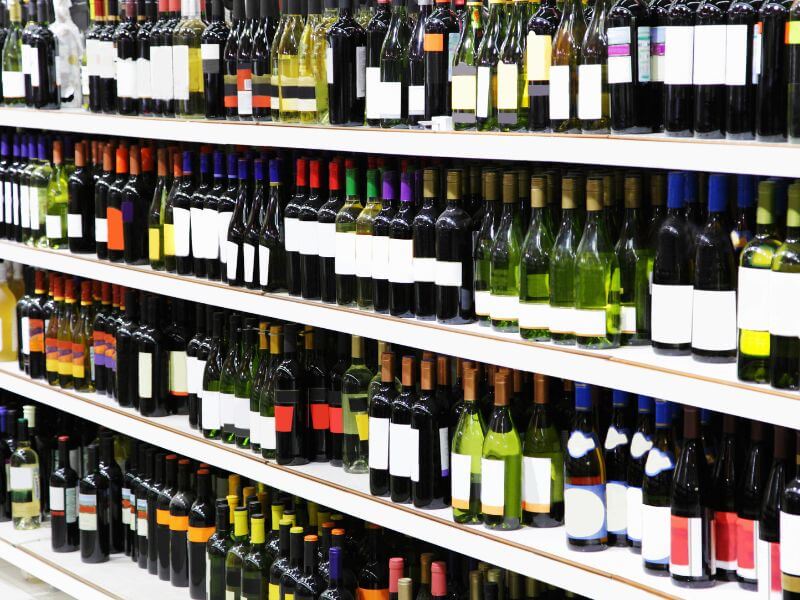Italian Sassicaia wine is one of the most prestigious wines in the world and has been so since its first vintage, made in 1961 by Italian winemaker Tancredi Biondi-Santi. Made using 100% Cabernet Sauvignon grapes, it has gone on to earn many awards as well as high praise from wine critics around the globe. Now that you know what Sassicaia wine is, here’s everything you need to know about it.

Introduction To The Prestigious Sassicaia Wine
The wine you’re about to sample is one of Italy’s most prestigious and sought-after wines. It comes from the commune of Carmignano, which is located in Tuscany – one of Italy’s most iconic wine regions.
Only select vineyards are allowed to produce it and even then, only during certain months of production (around September) with a fairly restricted number of grapes produced per acre, making it an extremely rare find at an affordable price.
One taste will have you understand why!
As with most other Bordeaux varieties, Sassicaia is made from a blend of Merlot and Cabernet Sauvignon grapes which contributes to its richness, structure, and color.
It starts out with hints of berries before moving on to more complex flavors like black currants and leather that linger for quite some time. But what really makes it stand out is how juicy and full-bodied it is. One taste will have you wanting more!
Finally, one of its most distinctive features is how long it can age. It’s perfect for a decade or two in your wine cellar and some consider it living wine that only gets better with time.
Although you’ll have to wait years to enjoy it, considering how delicious and flavourful it is right now, it may be well worth it! Not to mention all of its health benefits (more on that below).
All in all, if you see a bottle of Sassicaia at your local wine store or supermarket, don’t hesitate for a second before picking up a few bottles. You won’t regret doing so!

How To Enjoy Your Sassicaia Properly
A guide on how to enjoy your wine. A single serving should be at least one and a half ounces. You’ll want to make sure you store it at an ideal temperature of around 55 degrees Fahrenheit or less.
Ensure that it’s kept in an area that doesn’t experience large changes in humidity as well—with these conditions being met, your wine will age at its very best rate.
If you do not plan on drinking it within three years of purchase, consider acquiring a second bottle and storing one for aging while enjoying the other over a longer period of time.
If you do not have another bottle, consider using a wine decanter to aerate your beverage. Letting air into it will make it taste its absolute best, but there are other ways you can enhance your experience as well.
Setting down a few slices of apple or just about any sort of citrus can help you to extract more flavors out of your wine by adding oxygen in and creating a greater aroma.
You can also add ice for an interesting twist that may come off as something akin to a cocktail—try pairing wine with a specific meal or dish from time to time as well, such as by picking a Chianti with pizza or Valpolicella when having pasta.

History of Sassicaia Wine
In 1972, a single cru vineyard was planted by Marchese Cesare Gimmo Antinori, who had just moved to northern Tuscany from Piedmont. He named it Sassicaia after a Florentine family name.
His motivation was simple: he wanted to make a wine that would celebrate his new land and capture its essence. Unlike many prestigious wines which are blended from various regions, the grapes of Sassicaia are 100% sourced from its single origin vineyard in northern Tuscany; therefore, giving it an unmistakable sense of place that sets it apart from other wines.
It’s such a special wine because only about 900 cases are produced every year!
And now, a bit about Sassicaia wine in general: If you’re looking for a special and unique wine to celebrate a special occasion, such as an anniversary or birthday, then you have to consider Sassicaia Wine.
It’s easy to fall in love with its earthy, tobacco-scented aromas that come from aging in large barrels called “botte grande”—large wooden vats that are only used for Chianti.
One of my favorite things about Sassicaia is how well it pairs with food! Its big body and bold flavors provide a nice contrast to both white types of meat and wild game.

Sassicaia Wine Grapes
How is Sassicaia wine made? Its grapes have a very low yield, making it difficult to produce. To get just a single bottle of Sassicaia wine you need 4 kilograms of black grapes from vineyards in Tuscany or Piedmont. After that, you’ll need to place them in French oak barrels for 18 years to achieve your desired taste and aroma.
And that’s why these bottles are so expensive! They are one of only three wines in Italy classified as a Denominazione di Origine Controllata e Garantita (DOCG) which means they must be produced using traditional methods on land that falls within a specified geographical area.
Grape vines are never harvested until at least 7 years after they have been planted, though more usually 10 to 12 years. After that, it takes a further three weeks to harvest them, due to their size and strength (many of which can reach 3 m in length). And then it’s 18 years of aging in French oak barrels.
This makes Sassicaia wine grapes extremely expensive and less available than others. Because only 10,000 bottles of sassicaia wine can be produced every year as only that number of grapes are good enough for these high standards.
Despite its name, Sassicaia wine grapes aren’t used to make a different type of wine in every vintage. Rather, they are used in varying quantities with those vines that are deemed exceptional. To be specific, at least 95% of these vines need to be perfectly healthy and mature with an average age of 40 years.
Alongside these come some cabernet sauvignon and cabernet franc that together account for a further 10% of all grapes used. The rest is made up of Merlot (10%), petit Verdot (5%) and Ciliegiolo (<1%).
Cabernet sauvignon, cabernet franc and merlot account for 80% of grapes used. They are planted in different areas with equal parts in Piedmont and Tuscany.
To be specific, Cabernet Sauvignon is grown on a sandy soil (siliceous) and at heights between 100 to 200 meters above sea level, while Cabernet Franc is found on clay-limestone soil at altitudes between 50 to 120 meters above sea level. Only 30 hectares of this area is good for growing those grapes.

Tenuta San Guido Sassicaia
The prestigious Italian wine, which comes from a small vineyard called Tenuta San Guido, located in Tuscany. Tenuta San Guido produces only three types of wine: Barolo, Chianti, and Sassicaia.
Tenuta San Guido’s vineyards are located in the northwestern corner of Tuscany, on a strip of land that is bordered by both Chianti and Barbaresco. Tenuta San Guido has been producing wine since 1968 and it is owned by Riccardo Mariani Grelle e Figli SpA, a multi-generation business.
In 1998 Tenuta San Guido began to make its Sassicaia as an extension of its flagship Barolo wine; however, unlike Barolo which it uses primarily Sangiovese grapes from its own vineyards for its production, Sassicaia was not produced from Sangiovese grapes at first.
The first vintage of Sassicaia was produced in 1999 using 60% Cabernet Sauvignon and 40% Merlot. Today, a blend of 80% Cabernet Sauvignon and 20% Merlot is used for their production.
Currently, there are approximately 100,000 bottles of Tenuta San Guido’s prestigious wine each year with an additional 15,000 produced from the wine purchased from third parties and then re-corked under its name; however, none of these third-party wines come from Tuscany.

Sassicaia wine price
This is one of Italy’s most prestigious wine brands. Its flagship product, called Sassicaia, is a red wine that comes from Tuscany. It is named after one of its noble grape varietals: Cabernet Sauvignon and Cabernet Franc. A bottle of 2002 vintage could cost as much as $1500 – yikes! On average, it would sell for about $750 – that’s a lot of money for a single bottle!
In recent years, its demand has been rather steady. It hit a low in 2013 but recovered by 2015. However, it remains one of Italy’s most prestigious wines. Most of its wine is actually consumed in Italy, so if you want to taste it abroad, better prepare your wallet and make sure you book it in advance! (But hurry – supply won’t last forever.)
Do You Want To Know Where To Find This? Click Here!
Other Popular Articles About Outstanding Wines
Ultimate Guide to the Best Wines in California 2022
Barbera D Alba – The Italian Wine You Need to Be Drinking!
–
go back to Wine
